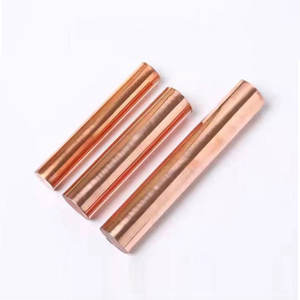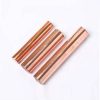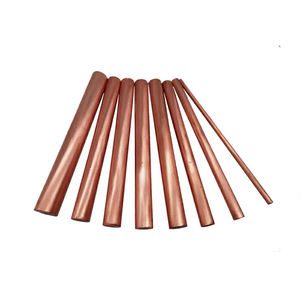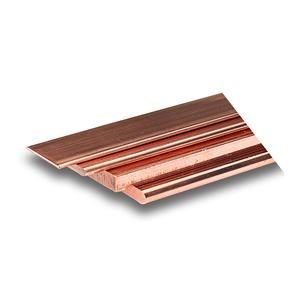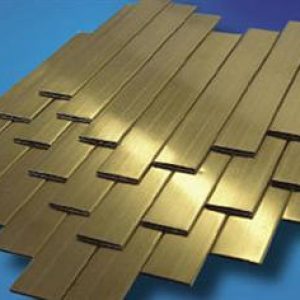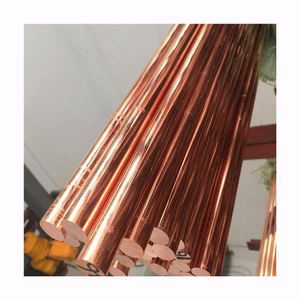Overview of alumina copper rod / alumina-copper bar
A copper bar, also known as copper billet or ingot, refers to a solid, rectangular or square-shaped piece of pure copper or copper alloy. These bars are characterized by their robustness, dimensional accuracy, and metallurgical consistency, making them ideal for applications requiring high mechanical strength and/or electrical conductivity. Copper bars are typically produced through casting, extrusion, or hot rolling processes, resulting in a range of sizes and shapes to accommodate diverse industrial needs. They can be supplied in standard lengths or custom-cut to specific dimensions based on the end-user’s requirements.
Copper Bar of alumina copper rod / alumina-copper bar
-
Strength and Durability: Copper bars exhibit good mechanical strength and toughness, enabling them to withstand high stress loads without fracturing.
-
High Conductivity: Like other copper forms, copper bars offer excellent electrical and thermal conductivity, which is essential in electrical and heat transfer applications.
-
Corrosion Resistance: Copper naturally corrodes at a slow rate and forms a protective patina, making it resistant to atmospheric corrosion and suitable for prolonged exposure to the elements.
-
Workability: Copper bars can be easily machined, drilled, turned, or otherwise fabricated into intricate shapes and components without compromising their integrity.
-
Versatility in Alloys: Copper can be alloyed with other metals to create bars with customized properties, such as increased hardness, wear-resistance, or specialized temperature and pressure tolerance.
Applications of alumina copper rod / alumina-copper bar
-
Machinery and Equipment: Copper bars are used in the production of heavy machinery components, gears, and bearings due to their strength and wear resistance.
-
Construction: For structural applications, electrical grounding systems, and architectural accents where both strength and aesthetics are desired.
-
Electrical Engineering: In the fabrication of busbars, switchgear components, and transformer parts where high electrical conductivity and durability are needed.
-
Transportation Industry: Copper bars are integral to the production of parts for automobiles, railways, and aerospace due to their combination of strength and conductivity.
-
Forging and Casting: Serves as raw material for further manufacturing processes like forging into intricate shapes or melting down for casting complex components.
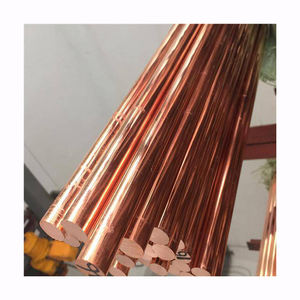
(alumina copper rod / alumina-copper bar)
Parameters of alumina copper rod / alumina-copper bar
The specific properties of an aluminumCu rod or bar can vary depending on the composition and manufacturing process used. However, some general parameters that can affect its properties include:
* Critical temperature (CT): This is the temperature at which the metal changes from a solid to a liquid state. AluminaCu rods with higher CT values tend to have higher melting points and are therefore less likely to flow under normal conditions.
* Yield strength: This is the maximum stress a material can withstand before it breaks. AluminaCu bars with higher yield strengths are stronger and more durable than their equivalent aluminums bars without Cu.
* Thermal conductivity: This is the ability of a material to transfer heat quickly to its surroundings. AluminaCu rods with high thermal conductivity are better suited for applications where rapid cooling is required, such as in high-temperature heating systems.
* Mechanical properties: These are the physical characteristics of a material, such as its weight, density, hardness, and elasticity. AluminaCu rods and bars with high mechanical properties will be able to withstand more stress and resist deformation over time.
Overall, the properties of an aluminumCu rod or bar depend on a combination of these factors, and careful consideration of these parameters is important for selecting the right material for a particular application.
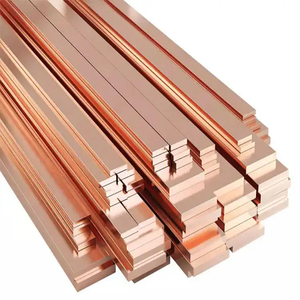
(alumina copper rod / alumina-copper bar)
Company Profile
Copper Channel is a trusted global metal material supplier & manufacturer with over 12-year-experience in providing super high-quality copper products and relatives products.
The company has a professional technical department and Quality Supervision Department, a well-equipped laboratory, and equipped with advanced testing equipment and after-sales customer service center.
If you are looking for high-quality copper materials and relative products, please feel free to contact us or click on the needed products to send an inquiry.
Payment Methods
L/C, T/T, Western Union, Paypal, Credit Card etc.
Shipment
It could be shipped by sea, by air, or by reveal ASAP as soon as repayment receipt.
FAQs of alumina copper rod / alumina-copper bar
Q: What is the standard size for alumina copper rod / alumina-copper bar?
A: Copper bars are available in a variety of sizes, with common dimensions ranging from small squares or rectangles of a few millimeters in thickness to large sections several inches thick and wide. Exact sizes can be customized to order.
Q: Can alumina copper rod / alumina-copper bar be welded?
A: Yes, alumina copper rod / alumina-copper bar can be welded using various techniques, including gas tungsten arc welding (GTAW), gas metal arc welding (GMAW), and shielded metal arc welding (SMAW), although proper preparation and technique are necessary to avoid issues like porosity.
Q: Is alumina copper rod / alumina-copper barsuitable for marine environments?
A: Yes, copper’s inherent corrosion resistance makes it suitable for use in marine applications, although specific alloys may be preferred for added protection against saltwater corrosion.
Q: How does the cost of alumina copper rod / alumina-copper bar compare to other metals?
A: Copper tends to be more expensive than some common structural metals like steel due to its higher conductivity and relative scarcity, but its unique properties often justify the cost in specialized applications.
Q: Is alumina copper rod / alumina-copper bar recyclable?
A: Absolutely, copper is one of the most recycled metals globally. Copper bars can be melted down and reused repeatedly without losing their inherent properties, contributing to a circular economy and sustainable practices.
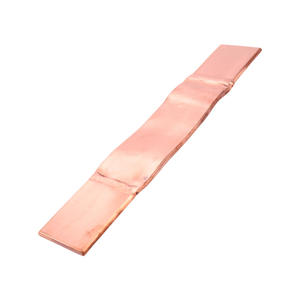
(alumina copper rod / alumina-copper bar)
